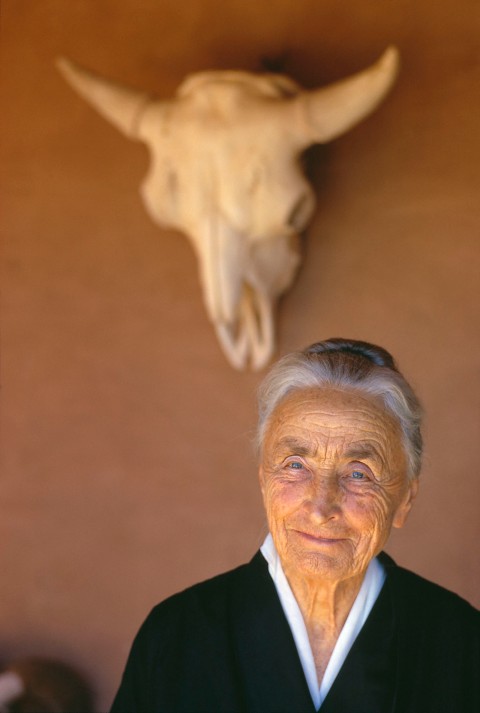Archive for July, 2016|Monthly archive page
Whole in a Hole – Picture of the Month: Pelvis 1 by Georgia O’Keeffe (1944)

Pelvis 1 – Georgia O’Keeffe (1944)
Reviewing Georgia O’Keeffe’s life’s work at the extensive exhibition currently showing at Tate Modern, it is clearly a journey of abstracting Nature to capture and communicate its essence.
The journey as portrayed in this retrospective has the following landmarks along the way: early experiments with pure abstraction, exploring synaesthesia and detached from figurative representation; taking the figurative edge off of cityscapes of New York; immersion in Nature in New York State; flower paintings; discovering New Mexico; bone paintings and New Mexican landscapes; last works including aerial landscapes. I pick out Pelvis 1 as the culmination of the journey.
It is the brilliant realisation that you can create a ready-made abstract of Nature through the simple device of a dried bone from the arid landscape of New Mexico. O’Keeffe used the hole in a pelvis bone to frame the brilliant blue of the Southern sky. In so doing we have both the figurative representation of a piece of sun-bleached bone and patches of sun-drenched sky; and a two-colour abstract centred on a big blue ball. There’s just enough shadow on the bone and shading in the sky to retain the literal representation of the scene and yet the execution is simple enough to read as a Modernist work of Abstract Expressionism.
The tightly cropped presentation owes something to the art of photography – O’Keeffe was married for over two decades to the photographer and modern art promoter Alfred Stieglitz.
The degree of abstraction is amplified when we consider the date: 1944. There was some heavy shit going on for the USA in ’44 and even more so for humanity and the world and yet we have here purity and tranquility. Having said that, over half of the picture area is made up of Dead Stuff (bone). Pelvis can be read as a momento mori, a meditation on the finite life of Man and Nature’s creatures in contrast to the infinity of the heavens.
O’Keeffe was consciously in search of what she termed “The Great American Thing”, a form of art as native and characteristic as, say, Scott Fitzgerald’s The Great Gatsby was in terms of the novel. That other Great American and lover of Nature, Henry David Thoreau, swore by Simplicity:
Our life is frittered away by detail. Simplify, simplify.

Mask with Golden Apple – Georgia O’Keeffe (1923)
And our own apple-lover Isaac Newton captured it well:
Nature is pleased with simplicity.
So is Art.
Another great American Modernist, architect Frank Lloyd Wright, (much influenced by Thoreau) summed it up as well as anyone:
Simplicity and repose are the qualities that measure the true value of any work of art.
By those measures Pelvis 1 is a masterpiece. I love it for having boiled down the essence of the Human Condition (mortality in the face of eternity) like the desert strips the rotting body down to pure white bone. O’Keeffe collected bones from 1929, initially due to Nature holding back its bounty: “That first summer I spent in New Mexico I was a little surprised that there were so few flowers. There was no rain so the flowers didn’t come. Bones were easy to find so I began collecting bones.” She began painting them from around 1931, initially mainly skulls. She painted them as still lifes; superimposed on landscapes in the Surrealist manner; integrated into the landscape sitting in the foreground. That this painting features the pelvis rather than the skull I also love because this is not about brains and thinking, this is about cohones and feeling, about instinct and the deepest-down understanding.




Georgia O’Keeffe by Alfred Stieglitz
* * * *
A previous Latino Picture of the Month: Autorretrato con Chango y Loro (Self-portrait with Monkey and Parrot) – Frida Kahlo (1942)
 Comments (1)
Comments (1)

